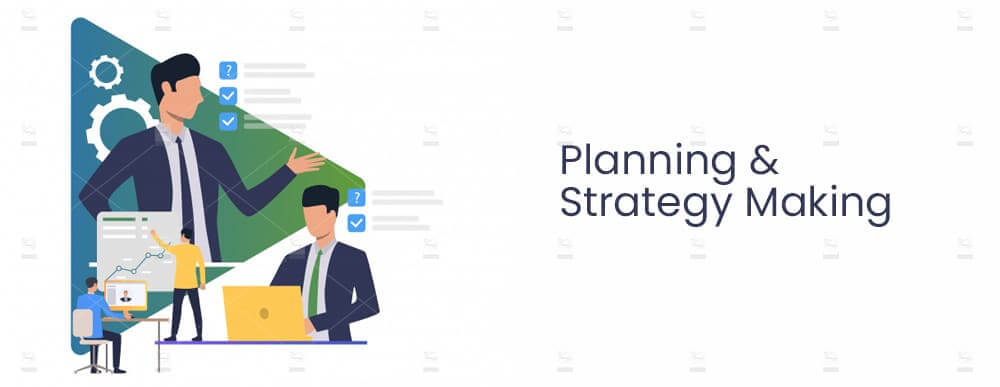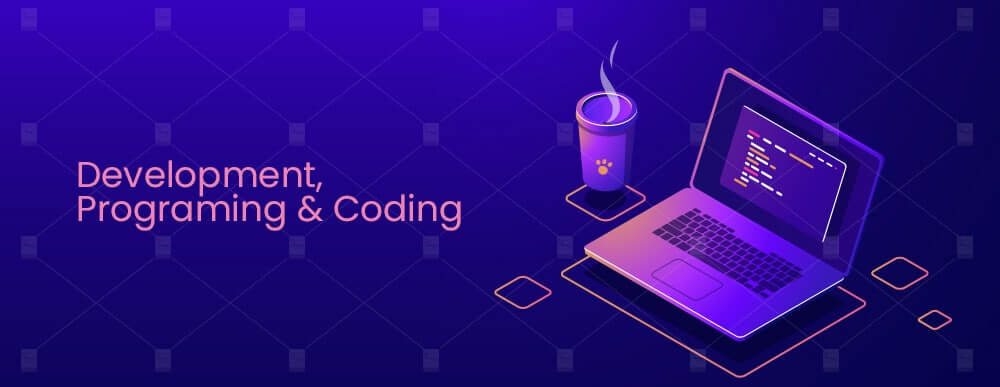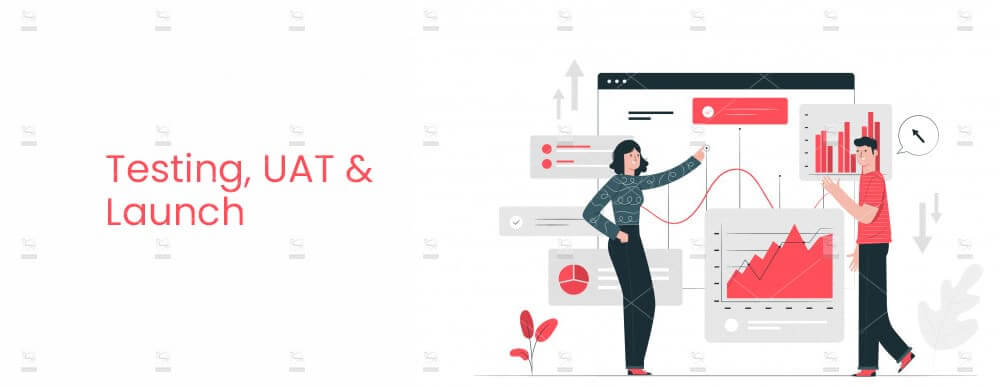In the modern business landscape in Dubai, UAE the websites are a very crucial and essential part of online strategy. No matter if you are a small local business, or a medium-sized enterprise operating throughout the country, or a large corporation or a multinational, having an excellent website could be a great competitive edge. As in Dubai, UAE the competition is always very high, which not only compel businesses to raise their standards but on the other hand, the communication and marketing became way more difficult than in anywhere else in the world. If you really want to stay ahead of your competitors then you must have to have an excellent website and online strategy. The website is an integral part of digital marketing or online branding and the web design is the foundation stone of all. No matter you are generating organic or inbound traffic if your website is not capable to present your products and services effectively then the prospects and leads will never convert.
In this blog we will discuss 5 different phases of web design and development project to understand the web design and development process to improve the outcome:
1. Requirements Gathering (1 to 2 Weeks)

This is the very first and most important part after signing-up a web design and development contract with any vendor in Dubai, UAE. This phase includes detailed sessions and meetings with the client and other stakeholders. The business analyst or the project manager should arrange this session between the website design and development teams with the client and their respective departments to understand each and every aspect of the website. If the business has multiple products/services then the requirements and expectations of these particular managers or heads of the department are very crucial to build a strategy.
After gaining enough knowledge of the business the next thing is to determine the goals and objectives of the project. Let say:
- What exactly the client is expecting from the web design agency to deliver to them?
- What would be the impact (estimated) of the new website on the business?
- What is the targeted audience? (Both demographically and geographically.)
These questions and more like these will help to determine the actual goals and objective of the client for this project. This will help the web design agency in the strategy-making process. Most of the time the client’s expectations are too high, or unrealistic. So, at this stage, the web designing agency can effectively communicate with the client to provide them with a clear picture of what could be possibly expected from the project.
2. Planning and Strategy Making (1 to 2 Weeks)

Now that both the parties, the client and the web design company both are completely clear about the expectations, requirements, goals and objective of the project, we are good to go for the next phase. All the information gathered from the previous stage will be processed and the scope of work will be formed. The web design agency will prepare the sitemap of the website on the bases of the information provided by the client. Along with the sitemap the wireframe will also be created at this stage. Together both can provide clear information about the website information structure, navigation and a detailed map of the final website. This information will allow the customer to understand how the actual website will look.
This data will also clarify how different sections of the website will be connected to each other and along with all the sequence and arrangement of links and menus of all the pages. This will not only provide a better understanding of the website navigation but it also allows the customer to visualize the actual user journey. If any change or modification is required it can easily be done at this stage.
3. Designing Process (2 to 6 Weeks)

Like the sitemap, information structure, navigation and all other parameters are finalized in the previous stages, now the actual web designing work begins. At this stage, the final look and feel of your website is prepared. The web designer will choose the colour schemes, design the actual layout, design elements, graphics and animations, visual effects and interactive parts of the website. The complete web design is completed in multiple phases, we also use to call them templates. At the very first, the Homepage template is finalized, then the internal pages, in a normal corporate website there could be only a few distinguishable templates, such as:
- Homepage
- About US Section (Introduction, Mission/Vision, Team, etc)
- Products/Services Listing
- Product/Service Detail Page
- Generic Inner Page Template
- News and Blogs Section
- Portfolio or Work Samples
- Media Library or Downloads
- Career Section (Job Posting, Job Application, etc)
- Contact Us
These all are usually designed and presented to the client in the same sequence as listed above. The header and footer section is the common section of all the templates, the body section is designed differently to present specific information for that page/section.
As these templates or in technical terms the mockups are the product of the web designer’s imagination and their understanding of the information gathered in the previous phases so these all mockups are presented to the client one by one to take their feedback. Multiple revisions can be done on the bases of the complexity and importance of the page/section. It is always good to go step by step and only move to the next mockup after getting the client’s approval on the previous one. This will not only save a lot of time but it will make the project management easier for both the parties. The as different section might require the involvement of different people/department from the client-side so arranging discussion and meetings would be a lot easier too.
The Content
The content writing is also done in parallel to the designing work in this phase. Whether the client is providing the content of the web design agency is doing the content, it should be ready before moving to the next phase.
The Compatibility and Responsiveness
The compatibility and responsiveness of the website should be defined at the designing stage so that the final user interface can meet all the requirements. Although the cross-browser compatibility and the responsiveness for different screen sizes and devices such as PC/Laptops/MAC, Smartphones, Tablets, iPads, etc. During the development phase, the designs are configured to respond to the device, browser and screen size by automatically adjusting the layout for the optimum arrangement.
4. Development, Programming and Coding (3 to 4 Weeks)

The website development, programming and coding is almost the final phase. In this phase, the actual website is formed with all its features and functionalities. There are two major techniques to develop the websites, the first one is HTML based websites, and the second in CMS based website development. Both have their own pro and cons, but the most preferred method in Dubai, UAE and all around the world is CMS based website development.
The HTML based website or Static website do not have any content management system. A content management system is a software that allows the customers to update their website content without any technical or programming knowledge. It has a very basic and simple to use interface for back-office staff, to upload or change images/videos and textual content on the website, furthermore, new pages can be created with pre-defined templates. A lot of other control and management functionalities are there in the content management system or CMS.
Their second type is Dynamic or CMS based website development. There is a variety of content management systems available in the market, mostly free and some are paid. Such as WordPress, Joomla, Drupal, etc these are the most popular CMS in the world. The only drawback is that they have paid plug-ins and themes, which require annual subscription and the maintenance cost is also higher. The other popular type if Customized CMS, such as RSI CMS, these content management systems are custom built for the very specific needs of the client and are way too easy to operate and maintain unlike other popular open sources CMS (WordPress, Joomla, etc).
There is no regular cost or subscription for the custom PHP based CMS (such as RSI CMS), the full ownership is provided to the customer and above all these types of CMS are not open source so the software infrastructure is completely hidden and well protected. But the CMS like WordPress and Joomla are available for millions of people with their software infrastructure completely exposed, so they required regular security updates and patches, if not maintained properly the chances of data leak and hijacking are very high compared to the custom PHP based content management systems like RSI Concepts. Another advantage is the customization, which is way too complex and expensive for open source CMS such as WordPress as they are also maintaining a complete marketplace for their plug-ins and software tools, so most of the time the customer ends paying more than anticipated to achieve the desired functionalities.
The best approach is that the web design agency and the customer have a dedicated session to choose the CMS or the type of the development for the website before even starting the design phase so that everything gets clear and they can choose the best solution. The data entry for the website content should be done during this phase.
5. Testing, UAT and Launch (1 to 2 Weeks)

After the development phase, the website is ready, the design or frontend is configured with the backend or CMS of the website. The date entry has been done, now is the time to test the website for its performance, features, functionalities and user interface. The in-depth testing should be done by the web design agency, they will have to test each and every link, image/media, and text, and compatibility for supported environments, browsers and selective devices of the website. The customer should conduct a user acceptance test, all the key player from the customer side should go through the website to test each and every functionality to verify all the details or a meeting or presentation can be arranged in which the web design agency will do the full demo of the website.
At this stage the customer and the web designer should have to make sure that the expected user experience will be delivered, else minor alteration and changes can be done to further improve the user journey, but avoid big changes at this stage. Once done, the web designer will take final approval from the customer to prepare for the full launch of the website. The websites are usually uploaded to the live server using any FTP client or browser interface of the hosting panel. Then the DNS are configured to the hosting, after configuring the DNS the website becomes live in few hours, depends upon your domain name service provider.
Conclusion
The objective of this guide was to provide an understanding of the web design process and various phases of the project execution. We have arranged them in the best order of execution. If all the phases and stages are followed correctly then you can get a great outcome. As websites are very crucial for your online strategies, hence require a lot of attention. You should be able to map out your customer’s journey and their experience through the website which will result in more online conversions.
These days website has become more like a service rather than a product as they happened to be. So, this is also important that you plan for the future updates, upgrades and changes too. The best approach is to have a CMS based dynamic web design which will enable your team and staff to upload the website content and much more. Do sign the AMC (annual maintenance contract) with the web design agency, so that in case you want to modify any functionality or web design itself you can do it under that AMC.
It is always better to acquire professional services such as RSI Concepts, we are a premium web design service in Dubai, UAE having clients from all around the GCC.


